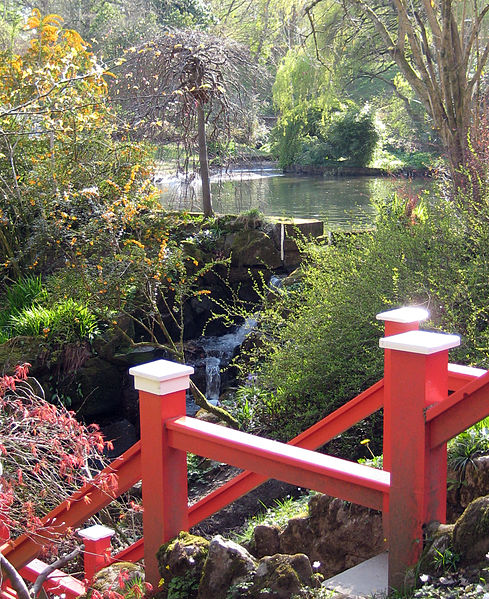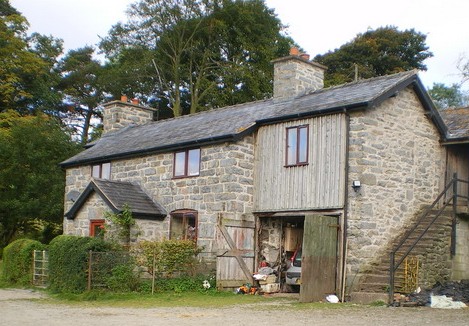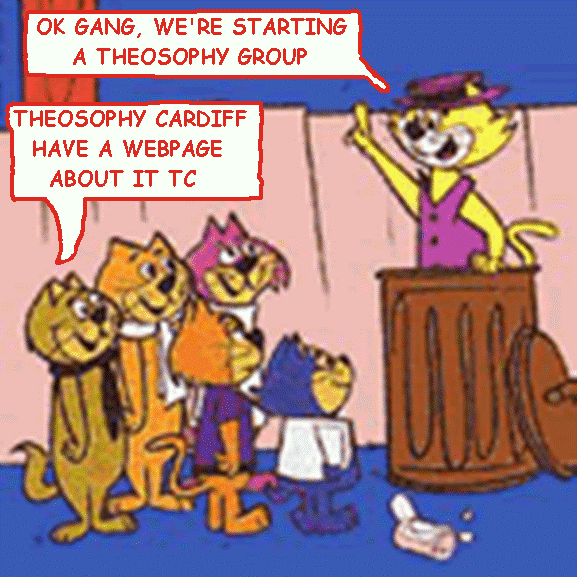THEOSOPHY
WALES


The Garth Pier Bangor
The second longest in Wales and also
the 9th longest
in the British Isles
at 1500 feet or 472 metres
History of Bangor
Return to Homepage
Bangor, in north Wales, is one of the smallest cities
in the United Kingdom.
It is a university city
with a population of 13,725 at the 2001 census, not including around 8,000
students at Bangor
University. Also
according to the census, 46.7% of the population speak Welsh (despite most of
the students coming from outside Wales).
The origins of the city date back to the founding of Bangor Cathedral by the
Celtic saint Deiniol in the early 6th century AD. The name 'Bangor' itself comes from a Welsh word for a
type of fenced-in enclosure, such as was originally on the site of the
cathedral. The present cathedral is a somewhat more recent building and has
been extensively modified throughout the centuries. While the building itself
is not the oldest, and certainly not the biggest, the bishopric of Bangor is one of the
oldest in the UK.
Another claim to fame is that Bangor
allegedly has the longest High Street in Wales. Friars School
was founded as a free grammar school in 1557.
Bangor is largely contained to the south by Bangor
Mountain although the large housing estate of Maesgeirchen, originally built as
council housing, is to the east of the toe of the mountain near to Port
Penrhyn. The presence of Bangor Mountain casts a shadow across the High Street,
Glan Adda and Hirael areas such that from November through to March some parts
of the High Street in particular receive no direct sunlight as they lie in the
shadow of the mountain. Bangor
has two rivers within its boundaries. The River Adda is a largely culverted
watercourse which only appears above ground at its western extremities near to
the Faenol estate, whilst the River Cegin enters Port Penrhyn at the eastern
edge of the city. Port Penrhyn was an important port in the nineteenth century,
exporting the slates produced at the Penrhyn Quarry.
Bangor railway station, which serves the city, is
located on the North
Wales Coast
Line from Crewe to Holyhead.
Radio stations Champion FM and Coast FM broadcasts to
the city in English and Welsh and Storm FM broadcasts from the University. The
BBC's Light Entertainment Department moved to Bangor during World War II and many classic
programmes (like ITMA) came from Bangor.
In 1967, the Beatles came to Bangor
(staying at Neuadd Reichel) for their first encounter with Maharishi Mahesh
Yogi, during which visit they learned of the death of their manager Brian
Epstein.
Bangor
hosted the National Eisteddfod in 1890, 1902, 1915, 1931, 1940 (through the
medium of radio), 1943, 1971 and 2005, as well as an unofficial National
Eisteddfod event in 1874. Nightclubs in Bangor
include Time/Amser, Academi (the Student Union bar) [1] and the Octagon &
Glitterball [2]. Bangor
is twinned with Soest, Germany.
Bangor has a pier, which is the second longest in
Wales and also the 9th longest in the British Isles, being 1,500 feet (or 472
metres). Its name is the Garth Pier, and was almost demolished in 1974 due to
the poor condition it was in at the time. However local support for the pier
ensured that it survived and gained a Grade 2 listed status, as it was
considered one of the three finest surviving piers at the time. Restoration work
began in 1982 and did not finish until 1988.
Bangor has
a successful football team, Bangor
City F.C. which competes in the national Welsh Premier League. Bangor City has won numerous cups and
championships, and has represented Wales in European competition on a
number of occasions. Bangor
is also home to rugby union team Bangor
RFC who play in the WRU Division Five North league.
North Wales
Coastal Path
Bangor lies at the western end of the North Wales
Path, a 60 mile long-distance coastal walking route to Prestatyn
______________________
Bangor Local Scene
The Dark Order <Bangor Hippys>
http://www.bebo.com/bangor-hippys
Band Website – Based Bangor, North Wales
___________________
2009 Starts with a Boost for Theosophy
in Bangor, Conwy
& Swansea
The news that
the Welsh Regional Association has recently received a pecuniary bequest of
£3000 has to be greeted
with
overwhelming enthusiasm by the members of the
three Regional
Association affiliated Lodges in
Bangor, Conwy and Swansea.
The
possibilities for a massive boost in Theosophical
activities at
these Lodges are enormous and great
things are
probably, at this moment, being planned.
Return to Homepage

THEOSOPHY
WALES
For more info on
Theosophy
Try these
Dave’s Streetwise Theosophy Boards
The
Theosophy Website that
Welcomes
Absolute Beginners
Theosophy in Cardiff
Theosophy in Wales
Wales! Wales! Theosophy Wales
The All Wales Guide to
Getting Started in Theosophy
This is for everybody not just people in Wales
Cardiff Lodge’s Instant Guide to Theosophy
Cardiff Theosophy Start-Up
A Free Intro to Theosophy
Cardiff Theosophical Archive
Cardiff Blavatsky Archive
Blavatsky Blogger
Independent
Theosophical Blog
Quick Blasts of Theosophy
One Liners & Quick Explanations
Great Theosophists

Clyne Gardens
Blackpill, Swansea,
South Wales

Bryn Adda Farm
Glan Conwy, North Wales
The Most Basic Theosophy Website
in the Universe
If you run a
Theosophy Group you can use
this as an
introductory handout
Theosophy
The New Rock ‘n Roll
The Key to Theosophy
The Voice of the Silence
The South of Heaven Guide to
Theosophy and Devachan
The South of Heaven Guide
To Theosophy and Dreams
The South of Heaven Guide
To Theosophy and Angels
Theosophy and Help From
The Universe
Feelgood Theosophy
Visit the Feelgood Lodge
The Tooting Broadway
Underground Theosophy Website
The Spiritual Home of Urban Theosophy
The Mornington Crescent
Underground Theosophy Website
The Earth Base for Evolutionary Theosophy
Try these if you
are looking for a
local Theosophy
Group or Centre
UK Listing of Theosophical Groups
Worldwide Directory of
Theosophical Links
International Directory of
Theosophical Societies
The Theosophy Wales
Guide
to Starting a
Theosophy Group

Your Own
Theosophy Group Starts Here
A Guide to
starting your own
Theosophy Group
These are
suggestions and pointers for forming
your own
independent Theosophy Group and
not instructions on
how to form a branch of a
larger Theosophical
Organisation.
The subject of
affiliation to a larger body is
covered but as
affiliation may mean compromise
and nobody owns
Theosophy anyway, we leave
that decision
entirely up to you
___________________




